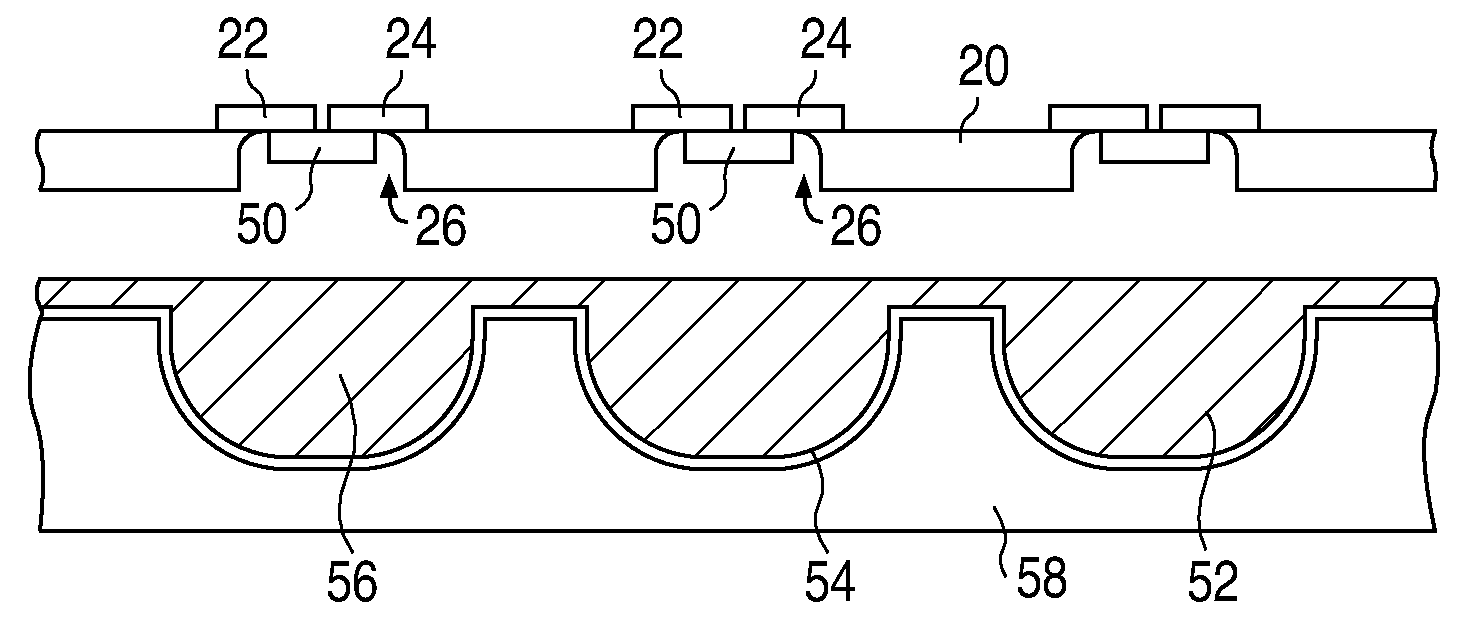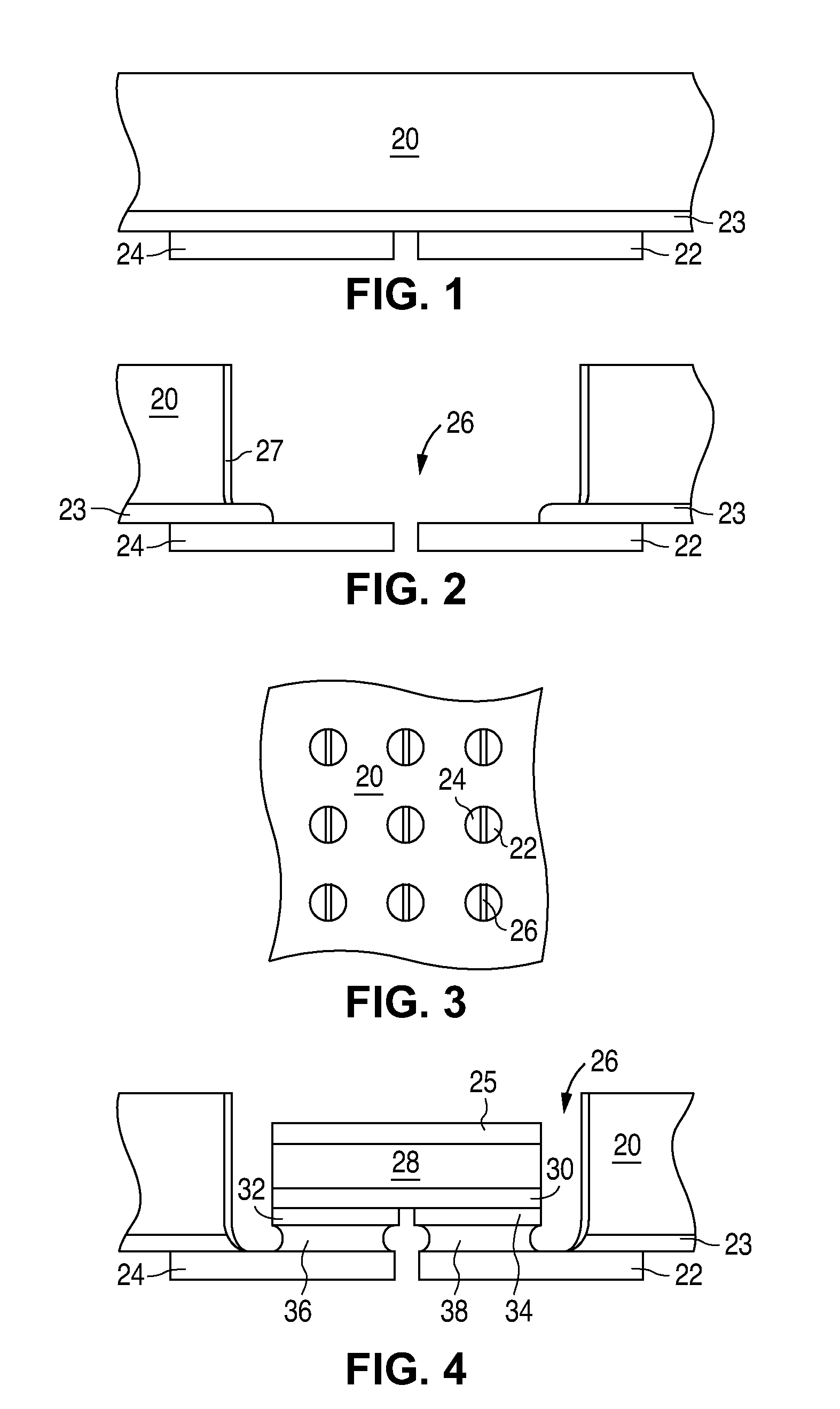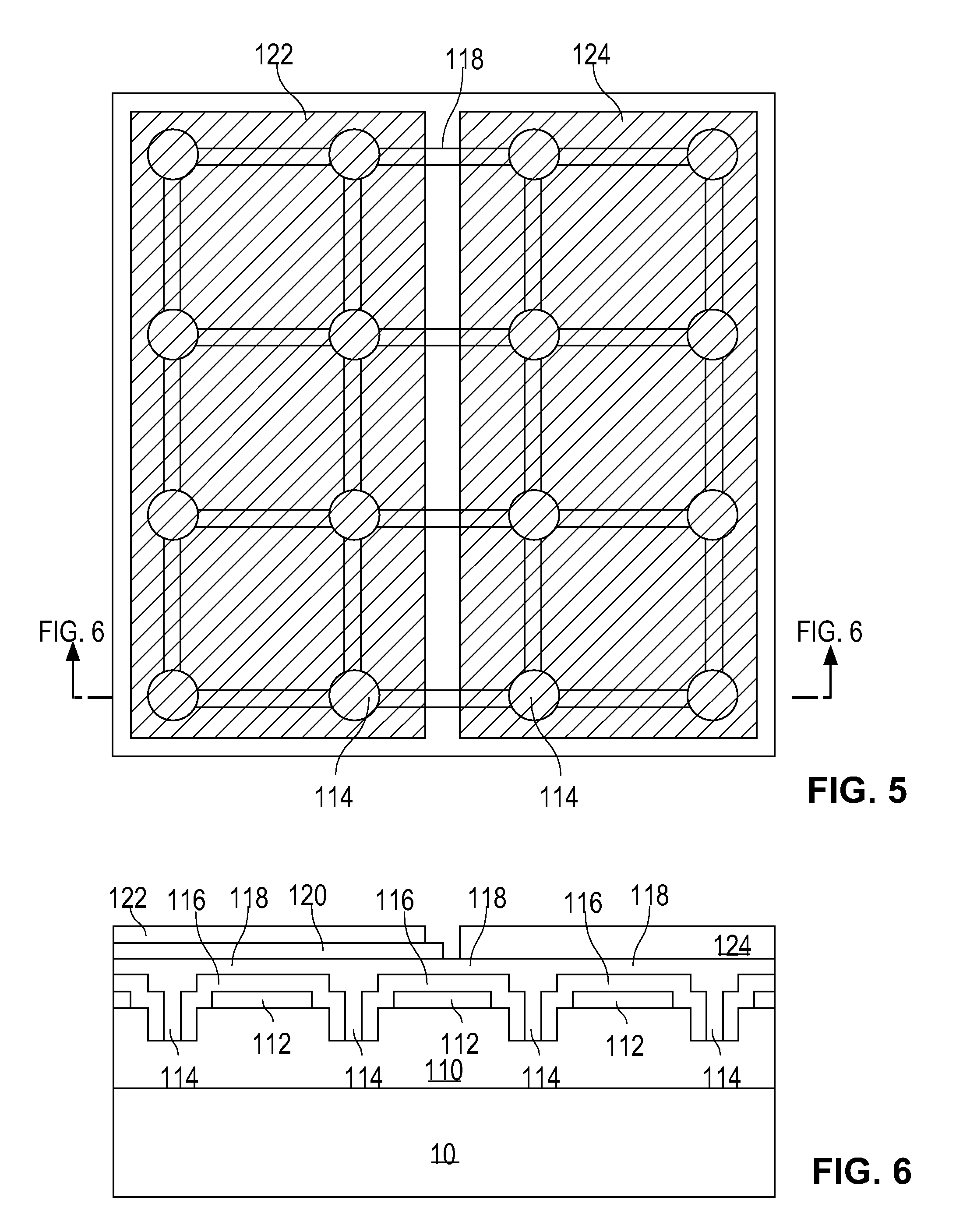Mount for a Semiconductor Light Emitting Device
a light-emitting device and semiconductor technology, applied in semiconductor devices, semiconductor/solid-state device details, electrical devices, etc., can solve the problems of inability to efficiently dissipate heat generated in the device by silicon mounts, and achieve the effect of efficient heat dissipation
- Summary
- Abstract
- Description
- Claims
- Application Information
AI Technical Summary
Benefits of technology
Problems solved by technology
Method used
Image
Examples
Embodiment Construction
[0020]In the structure illustrated in FIG. 1, metal leads 22 and 24 are formed on one side of a carrier 20. The material of carrier 20 is selected for the strength to withstand required processing and bonding steps, for ease of handling during any processing steps such as machining, and for ease of patterning during patterning steps. Carrier 20 may be, for example, silicon, other semiconductors such as GaAs, GaP, or Ge, or a non-semiconductor such as plastic, alumina, ceramic, a fluoropolymer such as polytetrafluoroethylene (Teflon®), polycrystalline materials, or glass. In some embodiments, carrier 20 may be flexible. In some embodiments, wavelength converting or luminescent materials such as phosphor may be incorporated in carrier 20.
[0021]In some embodiments, leads 22 and 24 are electrically isolated from carrier 20 by a nonconductive layer 23, which may be, for example, an oxide of silicon. Nonconductive layer 23 may be formed on the bottom surface of carrier 20 prior to forming...
PUM
 Login to View More
Login to View More Abstract
Description
Claims
Application Information
 Login to View More
Login to View More - R&D
- Intellectual Property
- Life Sciences
- Materials
- Tech Scout
- Unparalleled Data Quality
- Higher Quality Content
- 60% Fewer Hallucinations
Browse by: Latest US Patents, China's latest patents, Technical Efficacy Thesaurus, Application Domain, Technology Topic, Popular Technical Reports.
© 2025 PatSnap. All rights reserved.Legal|Privacy policy|Modern Slavery Act Transparency Statement|Sitemap|About US| Contact US: help@patsnap.com



